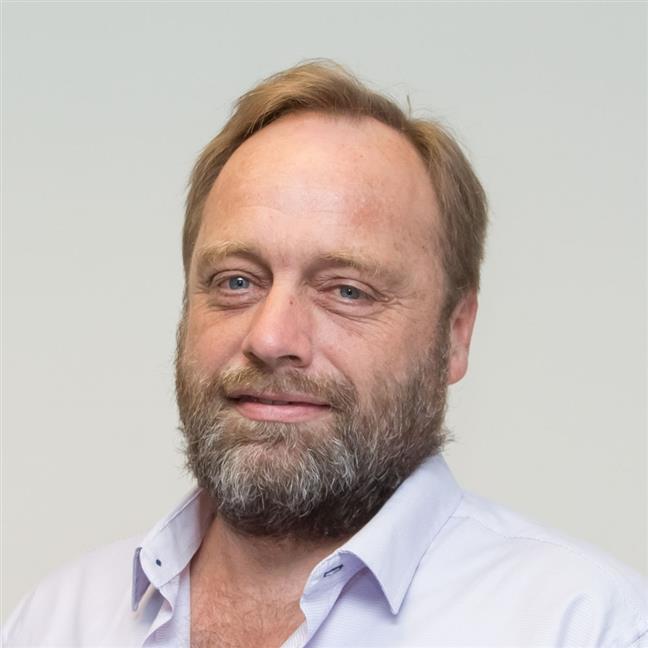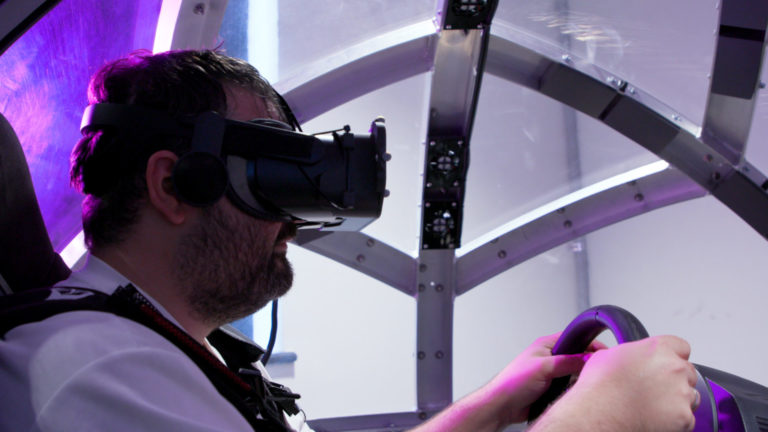RMIT University has unveiled a new 360-degree rotating, motional VR simulator.
The Eight360 NOVA Simulator – developed by a New Zealand-based team led by founder, CEO and self-described ‘STEM evangelist’ Terry Miller – is the first of its kind at a Victorian university and only the second in Australia.
The two-metre-wide sphere VR simulator is operated by a single person in a VR headset. It tricks the brain with its ability to quickly rotate in any direction, while audio, visual and physical sensations make it feel truly real.
While aviation, aerospace and the ‘virtual vehicle’ are the obvious applications of this impressive technology, Director of the STEM Centre for Digital Innovation, Professor James Harland, says the RMIT team is looking forward to finding new and exciting ways of using the simulator.
“It provides a far more immersive experience than a VR headset alone,” Professor Harland told EducationDaily.

Immersive, interactive innovation
“So, for someone training to be a helicopter pilot, it allows them to experience the physical sensations consistent with flying, including motion sideways and vertically – rather than having an experience for one’s eyes only. This immersion could be in response to controls, or for training on what to do when a heavy vehicle tips on its side, or for more interactive experiences, such as what would happen if a spectator ran onto an F1 track, and the driver had to brake and swerve unexpectedly.”
Perhaps the best way to put it is, he says, is “that it provides a software-driven immersive experience, allowing for better training and experiential learning”.
“One use case we have heard of is to train helicopter pilots to land on aircraft carriers and other moving vessels. In particular, there is apparently a ‘sweet spot’ to land when a platform is riding up and down on waves,” Professor Harland says.
“Using this simulator, one can design experiences to train pilots how to land in a variety of such conditions. Being software driven, it can also provide a basis as a flight simulator for any desired aircraft, from a commercial passenger jet to a propellor driven plane, or even military aircraft.”

The sky is, virtually, the limit
When it comes to considering other potential applications, Professor Harland told EducationDaily the possibilities are limited only by “one’s imagination”.
“For example, we have heard of some ideas about using the Nova as a meditation chamber, or for simulating the effect of rolling down a river in a canoe. We have also thought about car drivers being distracted (possibly by hooking up the Nova to other equipment, such as motion-capture suits), so that an ambulance driver can be trained to look for patients, or drivers in general learn how to react to sudden movements from pedestrians nearby,” he says.
“We already have a number of VR applications for learning, including a simulator for following food down the oesophagus and another for investigating how to eat in space, and it will be fascinating to see how these may be enhanced by this technology. Given that the Nova has only just arrived, we are still developing ideas for its use, but it won’t be long before we start seeing some of these in practice. It’s all about experimentation.”
A step beyond previous simulator technology
With its unique 360 motion replication capability, the simulator goes a step beyond other simulators to provide a much closer simulation of ‘real life’. It also captures biometric data, such as eye-tracking that can be used in conjunction with flight data from RMIT’s physical fleet to conduct deeper research and analysis.
Deputy Director of the STEM Centre for Digital Innovation, Professor Michelle Spencer, was one of the first to give the simulator a whirl. She explains that it will allow students to learn new technologies and think creatively.
“The NOVA provides a more immersive and realistic user experience,” she says.
“I tried out the virtual vehicle app, developed within the Centre, and the chair tilts when you drive up an embankment, for example, making it feel more like you are driving a car.”
Digital Solutions Architect, Dr Ian Peake, has been integral to setting up the Eight360 NOVA Simulator, which is housed in RMIT’s Virtual Experiences Lab.
“It has been a lot of fun to work with a large and diverse team to start creating experiences that will open doors for future RMIT students,” he says.
“We have a great team of technical experts at Eight360, RMIT teachers, computing technology project students and lab staff who have – and will continue to – create incredible experiences with this new technology.”








